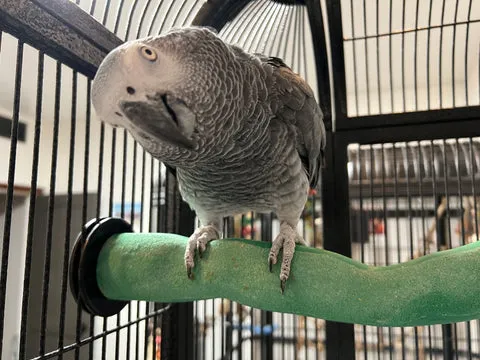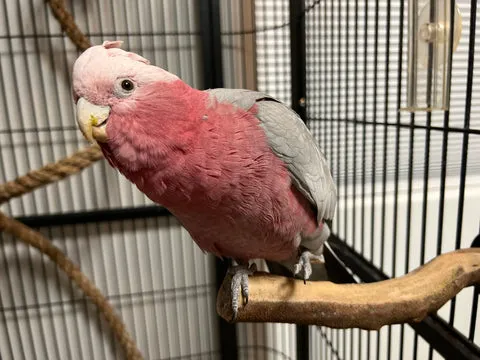Welcoming a feathered companion into your home, especially within a spacious 3-foot bird cage, is a joyous occasion. However, creating a safe and stimulating environment extends far beyond merely providing food and water. A critical yet often overlooked aspect of avian well-being is the careful selection and arrangement of perches. Improper perching can lead to painful foot ailments like pressure sores, which can significantly impact your bird’s quality of life. Just as a small change in my Goffin’s cockatoo, Theo’s, favorite perch made all the difference in preventing a persistent foot sore, understanding the nuances of perch health is paramount for any bird owner. This comprehensive guide will walk you through everything you need to know about choosing, maintaining, and arranging perches to ensure optimal foot health for your bird in its 3-foot bird cage.
Understanding the Importance of Proper Perching in a 3-Foot Bird Cage
A bird’s feet are its primary connection to its world, carrying its weight 24/7 for its entire life. In the wild, birds encounter a vast array of natural surfaces, providing constant exercise and varying pressure points. In captivity, confined to a 3-foot bird cage, it is our responsibility to replicate this natural diversity as much as possible through thoughtful perch selection. Monotonous perching surfaces or incorrect perch diameters can lead to serious health issues, with pressure sores being a common and preventable concern. These sores, often appearing as red spots or raw areas, are typically caused by constant irritation from an ill-fitting or unvaried perch, hindering grip and balance.
How Perch Diameter Impacts Your Bird’s Grip and Balance
The ideal perch allows your bird’s feet to wrap approximately three-quarters of the way around it, providing a secure grip and maintaining stability. If a perch is too large, your bird will struggle to grasp it firmly, leading to instability, constant shifting, and wobbling. This continuous micro-adjusting can result in skin irritation and eventually lead to painful pressure sores. Conversely, a perch that is too thin will also cause discomfort and an insecure grip, contributing to similar issues. It may require some experimentation to find your bird’s preferred sizes and materials within its 3-foot bird cage, as individual preferences can vary. Offering a range of diameters is crucial not only for proper grip but also to strengthen and increase dexterity in their feet, helping to avert long-term problems like arthritis and muscle atrophy.
Diverse Perch Materials for an Optimal 3-Foot Bird Cage Setup
Equipping your 3-foot bird cage with a variety of perches made from different materials is essential for your bird’s physical and mental well-being. Each material offers unique textures, densities, and benefits, promoting foot health by allowing different pressure points and exercise. Understanding the pros and cons of each type will help you create a diverse and enriching environment that caters to your bird’s natural instincts and prevents common foot ailments.
Natural Wood Branches: The Gold Standard
For the main perches within your 3-foot bird cage, natural wood branches are unequivocally the best choice. Birds in their natural habitat thrive on branches with varying textures, hardness, and widths, which constantly stimulate their feet and leg muscles. The best natural branches for your home will be those that are irregular in shape, bending and twisting, with natural off-shoots that provide additional grip points and climbing opportunities. Beyond their physical benefits, natural wood branches are fantastic for chewing, offering a vital form of enrichment and helping to keep beaks healthy.
In stark contrast, uniform wooden dowel perches, often found in starter cages, are highly discouraged. Their consistent diameter does not provide any exercise for a bird’s feet, and their smooth surface can be quite slippery, increasing the risk of falls. While some exceptions exist, such as for birds with specific medical conditions like Linus, an umbrella cockatoo with corn-like growths that make thicker branches uncomfortable, these should be temporary and used only under veterinary guidance. As soon as such conditions resolve, natural perches should be reintroduced to ensure proper foot health.
Specialized Perches: Sandy, Rope, and Shelf Options
Expanding beyond natural wood, various specialized perches can enhance the comfort and utility of your 3-foot bird cage, addressing specific needs from nail trimming to resting.
Sandy Perches: These perches, available in various shapes and colors, offer abrasive surfaces beneficial for naturally trimming nails and stimulating blood flow in your bird’s feet. However, due to their coarse texture, sandy perches are not suitable for long-term perching as they can irritate the skin over extended periods. They are best utilized in specific areas, such as near food and water bowls, where your bird spends limited time. It’s important to note a crucial update regarding concrete perches, which were once considered similar. We no longer recommend using them due to recent findings of lead contamination in some products. Chewing on lead-containing concrete can cause metal toxicity, and ingested concrete may require medical intervention for removal. Sandy perches with a plastic or wood base underneath the abrasive layer serve as a safer and effective alternative for nail maintenance.
 A plastic perch with a sandy texture provides an alternative for nail trimming and foot stimulation.
A plastic perch with a sandy texture provides an alternative for nail trimming and foot stimulation.
Rope and Natural Fiber Perches: These soft perches provide a comfortable respite from harder surfaces and are particularly appreciated by older, arthritic birds or those with physical handicaps. Their pliable nature offers a gentle support for tender feet. However, their softness also makes them highly inviting for chewing, which can lead to significant fraying. These frayed threads pose a serious risk; they can easily trap toes and nails, potentially leading to injuries such as a ripped nail bed or even the loss of a toe. Owners must diligently trim down any hanging fray with scissors to mitigate these dangers. Furthermore, monitor your bird for any signs of ingesting the strings, as this can cause a crop impaction, a life-threatening condition requiring immediate veterinary attention. Birds with a habit of ingesting stringy materials should not be provided with these types of perches.
 A Manzanita perch featuring a sandy texture along its sides, providing excellent grip and foot health benefits.
A Manzanita perch featuring a sandy texture along its sides, providing excellent grip and foot health benefits.
Shelf Perches: Shelf perches are an excellent addition to any 3-foot bird cage, offering unique benefits for foot health and enrichment. They provide a flat platform, allowing birds to rest their feet in a stretched position, alleviating pressure points that develop from constant gripping. These shelves also serve as fantastic platforms for toy play and comfortable eating areas. They are exceptionally easy to install and clean, making them a convenient and beneficial accessory for your bird. My cockatoo, Linus, adores the corner shelf in his cage, finding it perfect for relaxation and activity.
Maintaining Perch Hygiene within Your 3-Foot Bird Cage
Beyond selecting the right perches, proper hygiene is critical for your bird’s health in its 3-foot bird cage. Any new perch, especially natural branches brought in from outdoors, must be thoroughly sterilized before being introduced to the cage. Ensure that any outdoor branches come from trees that have not been exposed to pesticides or harmful chemicals. A common sterilization method involves soaking the perch overnight in a bathtub filled with water and a cup of bleach. In the morning, rinse the perch and the tub thoroughly with clean water, then soak the branch for another hour in fresh water to ensure all traces of bleach are completely removed. Allow the wood to dry completely, ideally for at least a full day, as porous wood can harbor bacteria when wet.
Regular cleaning extends to all perches, regardless of material. Food or fecal matter will inevitably accumulate, requiring frequent removal and scrubbing. Opt for perches that are easy to disinfect and clean to make this essential task less burdensome. Maintaining a rigorous cleaning schedule for all perches within your 3-foot bird cage is a non-negotiable aspect of responsible bird ownership, directly contributing to a healthy and hygienic environment for your beloved pet.
Thoughtful perch selection and meticulous maintenance are cornerstones of responsible bird ownership, particularly when outfitting a 3-foot bird cage. By understanding the diverse needs of avian feet and providing a variety of appropriately sized, textured, and clean perches, you can prevent painful ailments like pressure sores, arthritis, and atrophy. Remember, your bird spends its entire life on its feet, and ensuring their comfort and health directly contributes to their overall well-being and happiness. Invest the time and effort to create an optimal perching environment, allowing your feathered companion to thrive within their perfectly equipped 3-foot bird cage. For more expert advice on avian care and creating the ideal habitat, explore other articles on Dog Care Story, your trusted resource for pet well-being.
